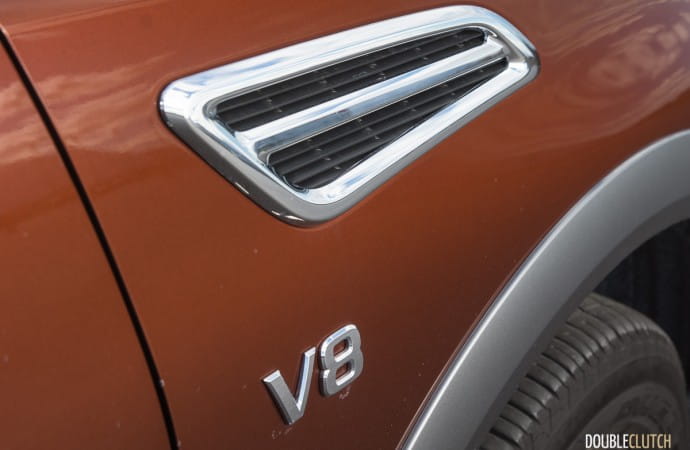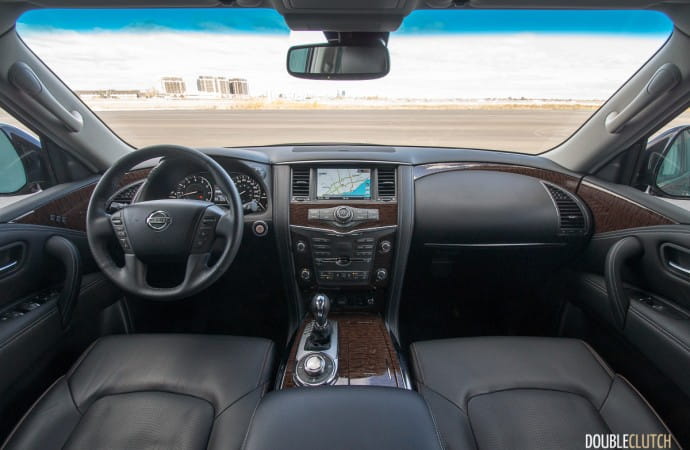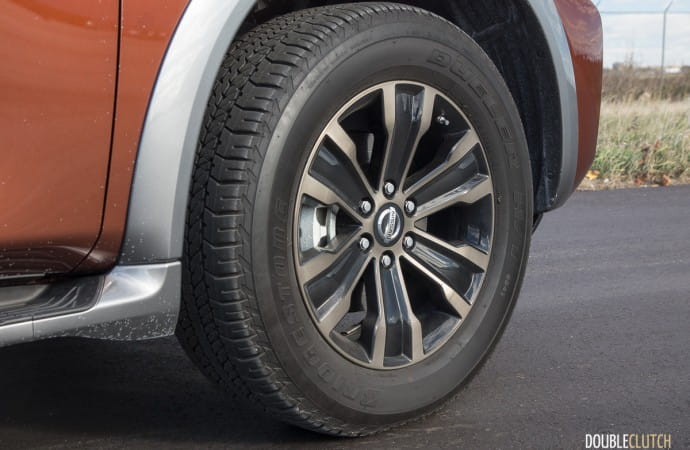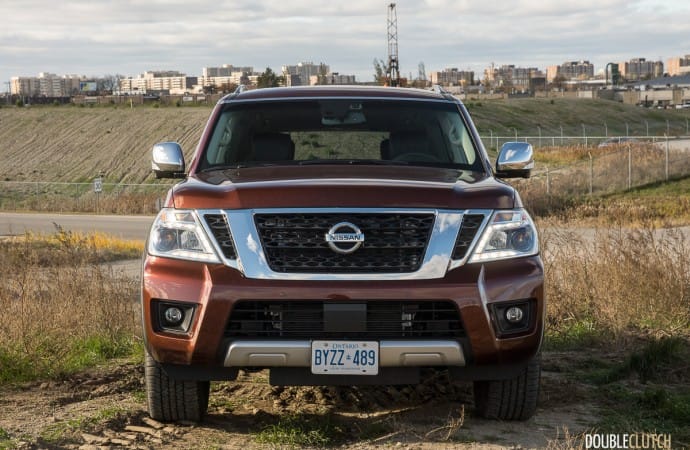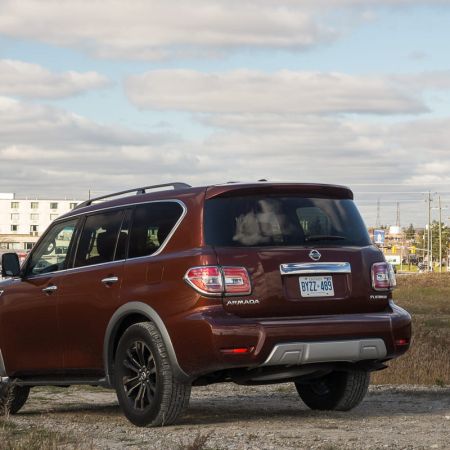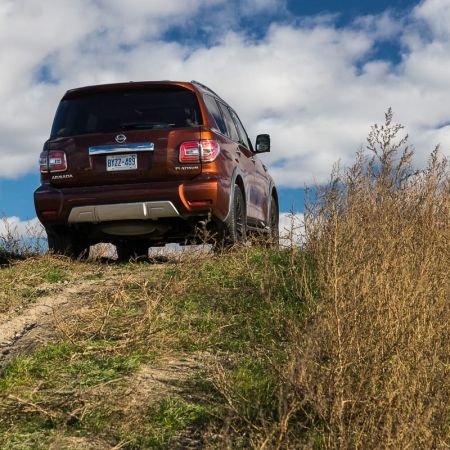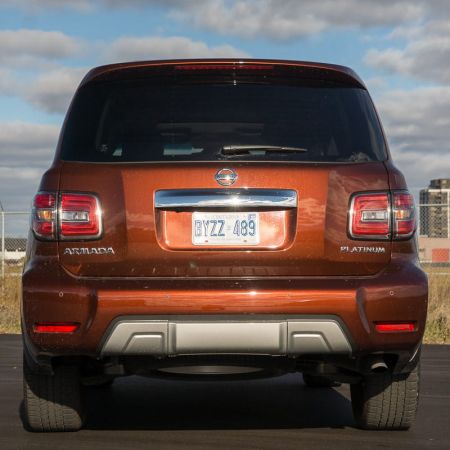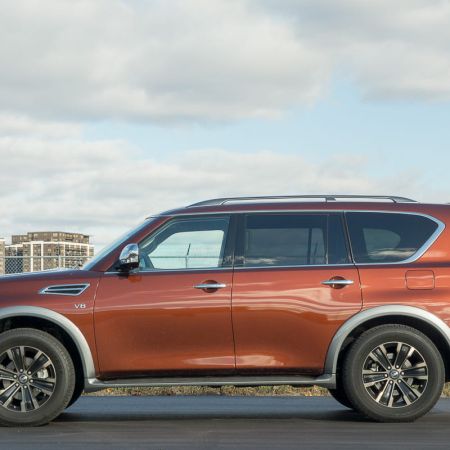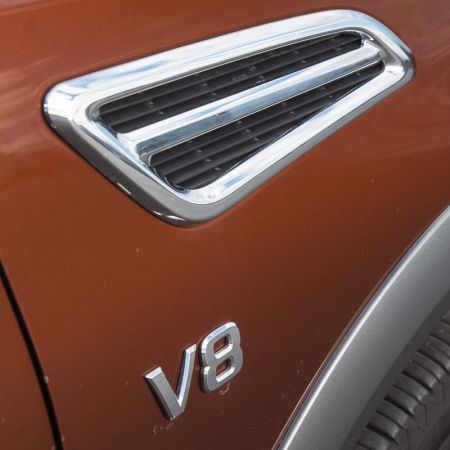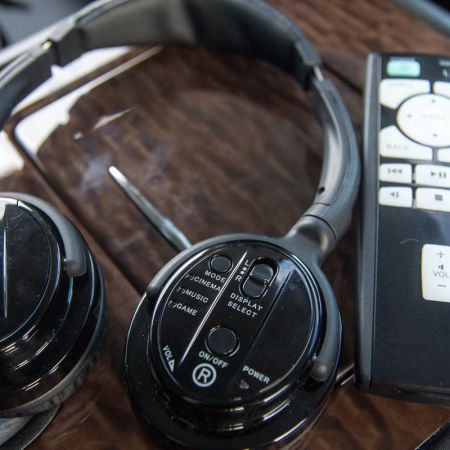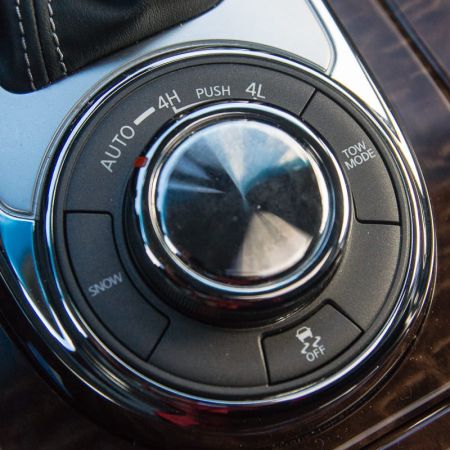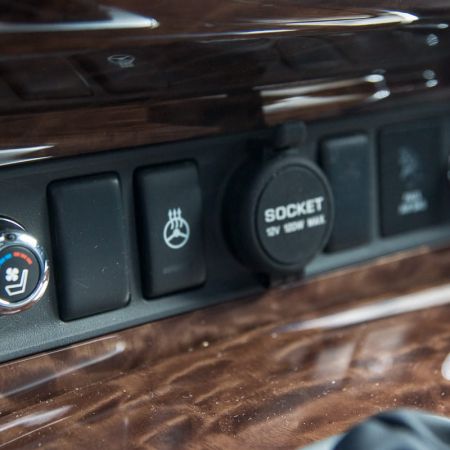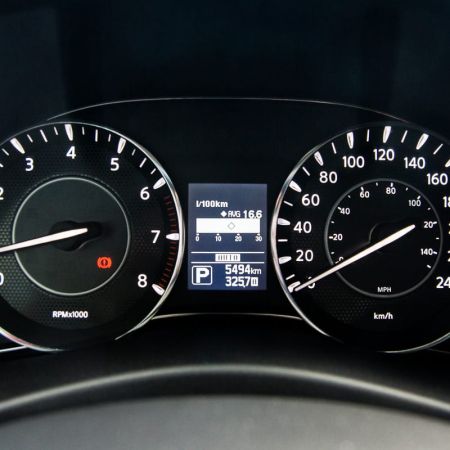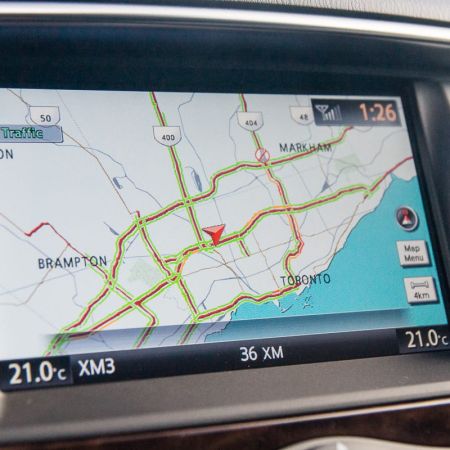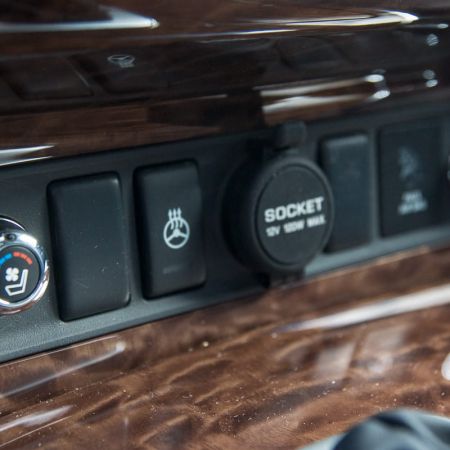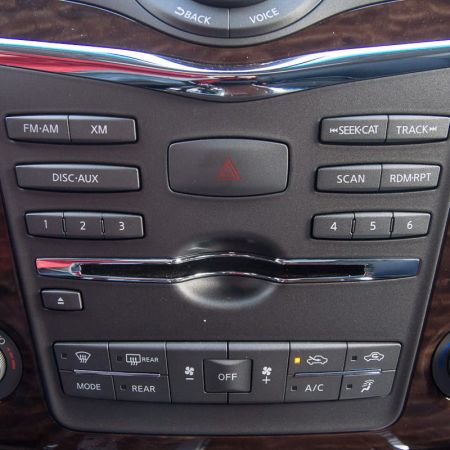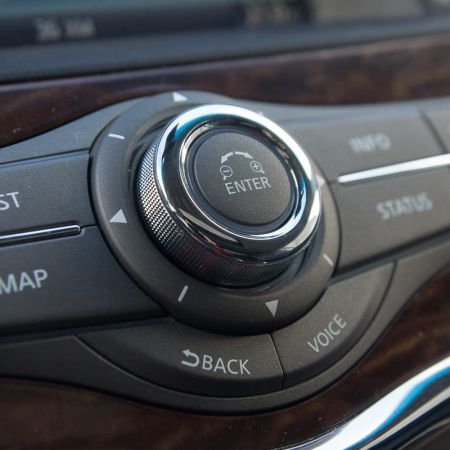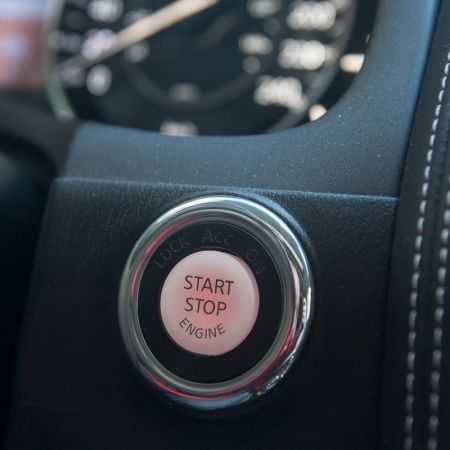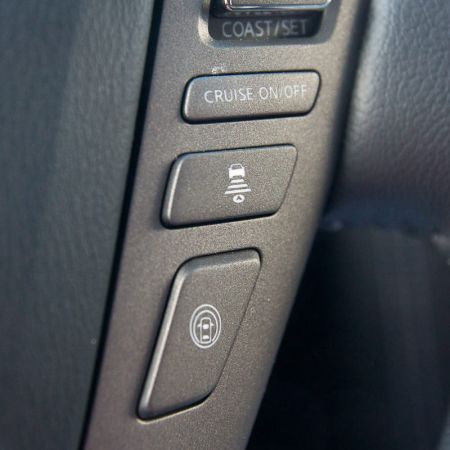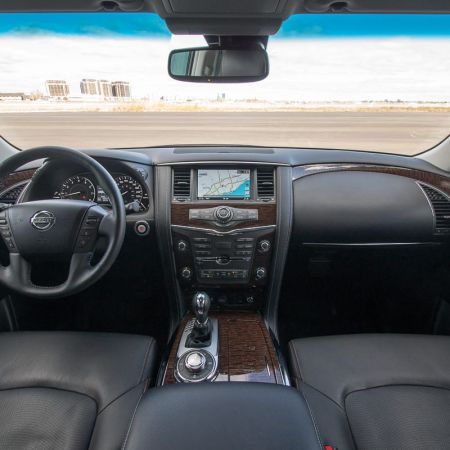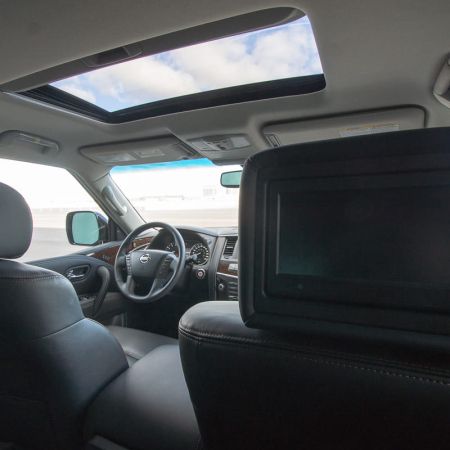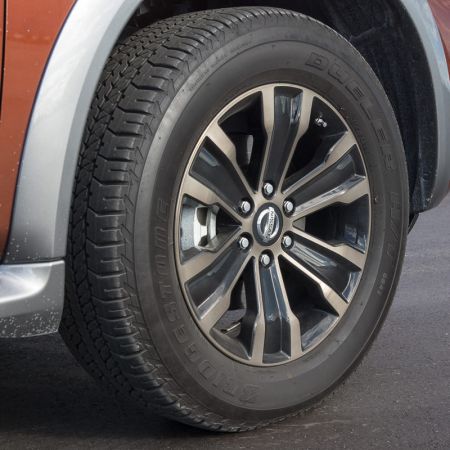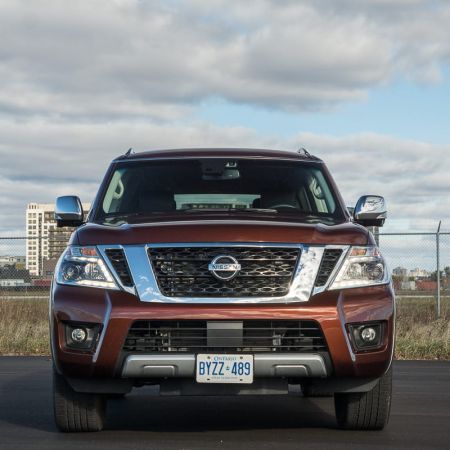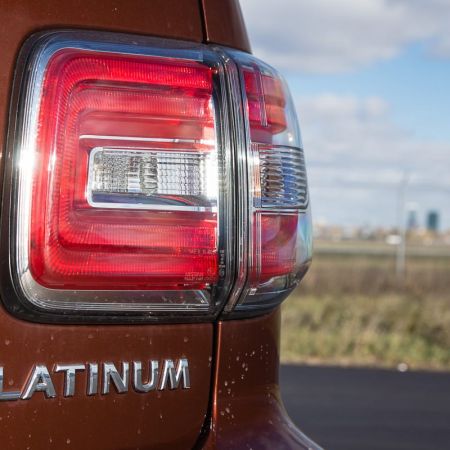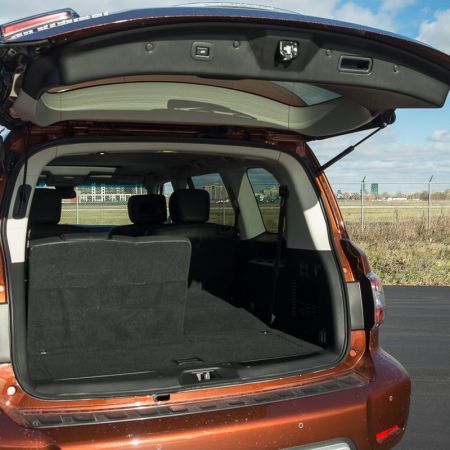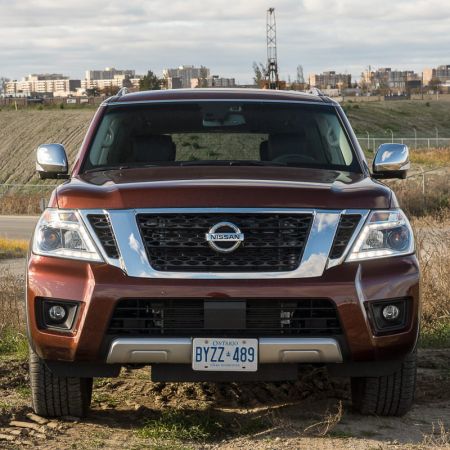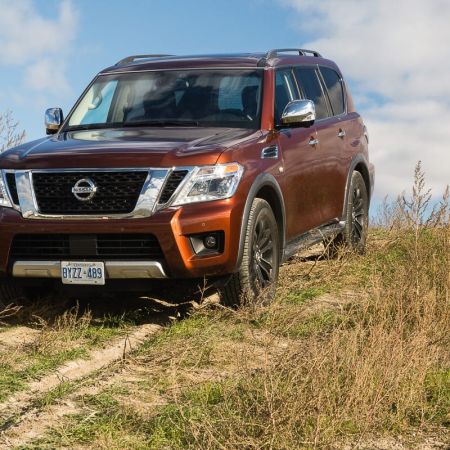The members of the DoubleClutch.ca family know me to have a strong aversion to gargantuan vehicles. Simply put, the lifestyle I live means I don’t really need a big truck all the time. The daily commute into and out of the downtown core is best done in something that is relatively nimble, and decently comfortable. Some of my colleagues were taken by surprise when I expressed excitement about being assigned the new 2017 Nissan Armada Platinum. This is easily the largest passenger vehicle they make (aside from the Titan XD pick-up truck), dwarfing the full-size, three-row, Nissan Pathfinder (reviewed here). So why does the Armada cost twice as much? Is it really twice the truck? I got the key to a loaded Armada Platinum to put through its paces for a week. I would be that guy who would be driving a massive SUV – alone – for most of the week.
Nissan is one of two Japanese manufacturers that plays in the full-size, body-on-frame, 3-row segment. Built on a full frame, this second-generation Armada isn’t actually a very “new” vehicle. The first-generation Armada was introduced in 2003 and was essentially a Titan (reviewed here) with a long roof, and seating for eight instead of a pick-up truck bed. This new Armada is closer to the Nissan Patrol than the Titan, though both share the same platform underpinnings. For those who pay attention to other world markets might recognize the Patrol from the Middle East, in the same places where you’d see the ubiquitous Toyota Land Cruiser. The harsh climates and operating conditions have endeared it and the Nissan Patrol, thanks to its mixture of durability, dependability, and longevity. The Patrol doesn’t quite have the same heritage and name recognition that the Toyota has, but it actually dates back to about 1951 – which is about the same time the Land Cruiser was born.
The new Armada not only derives its platform from the Nissan Patrol, but it also shares a great deal of hardware from the flagship Infiniti QX80 (reviewed here). What it doesn’t share, is its looks. The QX80 can be considered to be extremely polarizing, in part due to the way its headlamp modules and front grille interact to create the “face” of the QX80. The Armada is, by comparison, a lot more conventional-looking, and as a result, a lot more handsome than the QX80 (to these subjective eyes). A big chrome Nissan grille flanks headlamps that are more appropriately-sized for the size of the Armada, and they also feature full LED low-beam output as well as LED daytime-running lights. The side profile matches that of the Patrol and QX80, right down to the large (functional) vent mounted on both front fenders. A quick Google search will show that it’s quite easy to retrofit a snorkel-style air intake through these vents. Anything with a snorkel is cool, and the fact that you can utilize the stock fender vent makes it even cooler.
Inside, the Armada benefits from the QX80 relationship – the interior is essentially similar to the more premium Infiniti, aside from the big analog clock that adorns the centre stack underneath the infotainment system. It’s a stylish and functional interior configuration, with seating for up to eight. This particular tester came equipped with the no-cost Captain’s Chairs, which deletes the second-row centre seat to fit a larger centre console and armrest, bringing total passenger capacity to seven. These seats also fold and quickly pop out of the way for those looking to sit in the third row. The full-frame bones of the Armada means the third row isn’t the most accommodating – even folks of average height will find their knees high in the air.
The Armada on its own is pretty well equipped, with leather surfaces all around, satellite navigation, push-button start (with remote starter), 13-speaker Bose audio, radar adaptive cruise control, power seat memory, and a heated steering wheel, among others. The Platinum trim adds ventilated front seats, heated second-row seats, blind spot warning and intervention, lane departure prevention, and a second-row entertainment system made up of two seven-inch LCD screens built into the front-seat headrests. If you compare specification sheets with the Infiniti QX80, there’s not a whole lot the Armada Platinum is missing, unless you go for the top-end QX80 Limited (reviewed here). The Armada’s generous use of glossy wood-like accents could be toned down a bit, however.
A serious truck deserves a serious powertrain, and Nissan doesn’t disappoint, with the Armada. Under the hood resides Nissan’s latest version of the “VK”-series V8. Displacing 5.6L, the VK56VD puts down 390hp @ 5800rpm, and a brawny 394lb-ft of torque at 4000rpm. Direct injection and Nissan’s VVEL (Variable Valve Event and Lift) are the major updates to this engine; and the result is a big increase of 73hp and a more modest increase of 9lb-ft of torque, over the original Armada. It is paired up with a seven-speed automatic, with an electronically-controlled four-wheel drive system, and a two-speed, low-range gear for traction in pretty much any type of scenario.
The other big number is what the Armada can pull. If you’re looking to tow large boats or motorhomes, a full-frame SUV with a powerful engine is what you need. It’s rated to tow up to 3856kg (or 8500lbs.). To help out with the Armada’s towing credentials, an auto-leveling rear suspension is standard, as are uprated brakes and cooling. A lot of people assume towing capability comes down to how big the engine is, but it’s more of a function of braking ability while supporting all that extra weight, and how effective the thermal controls supporting the engine and transmission are.
Considering the massive size of the Armada, its curb weight isn’t really surprising, at 2695kg (5941lbs.), as-tested. This weight, coupled with the large V8, doesn’t lend itself well to fuel efficiency. Rated at 17.5L/100km in the city, and 12.9L/100km on the highway, the Armada is a thirsty beast. Throughout my week of mixed city and highway driving, I managed to hit an indicated average of 16.5L/100km. You need a lot of horsepower and torque to move all this weight from a stop, which is why the city ratings are so high. If you find yourself doing any sort of towing, expect fuel consumption to skyrocket – not at all a surprising notion. Thankfully, the Armada is more than happy with regular 87-octane fuel, and the tank will hold 98L of it.
All this do-everything engineering means you pay for it, but not quite as much as you would think. The base Armada starts at $64,248 for the base SL trim. As we already explored earlier, the list of standard equipment is very generous, but if you feel that you need the additional goodies, the Platinum edition rings in at an as-tested price of $69,998. Between the two, I would opt for the base SL – it’s actually a fairly decent value in the class, considering it retains such a strong feature set.
The Toyota Land Cruiser we’ve been talking about, isn’t sold in Canada. South of the border, Toyota USA prices it at $84,325 USD. Considering the exchange rate between our countries, this translates directly to well over $100,000. The closest a Canadian buyer can get to one is to look at the Lexus LX570, which is a premium, more luxurious version. Its price reflects its positioning in the market, at a hefty $107,500. While the Lexus retains the off-road credentials that the Land Cruiser is so famous for, its polarizing looks and focus on luxury somewhat overshadow and muddy the story, somewhat.
Where the Armada falls short is if you’re looking for hardcore off-road hardware. It turns out Nissan in North America has decided not to equip it with locking front and rear differentials. You’re able to lock the transfer case, but the axles at both ends of the vehicle are not lockable in any mechanical fashion. The Nissan Patrol overseas comes with all these additional controls, and anybody looking to do any serious rock crawling may be disappointed with these omissions. The Armada is also lacking the Hydraulic Body Motion Control system seen in the Infiniti QX80 and Patrol. This system is somewhat similar to Toyota’s Kinetic Dynamic Suspension System (KDSS) that can fully disconnect the stabilizer bars, for maximum wheel articulation. In addition, there aren’t any special off-road drive modes that tailor power delivery and electronic interventions for different types of loose surfaces (other than snow), nor is there Hill Descent Control. Long story short: the North American Nissan Armada is missing the best off-road gadgets that made the nameplate famous around the world.
While Japan has become extremely proficient at building what they think is the ultimate SUV, the Americans are not to be underestimated. The ever-popular GMC Yukon and Chevy Tahoe (reviewed here) are both close matches to the Armada – even down to the maximum towing figures. Neither boast the same off-road heritage and reputation for long-term reliability, but instead offer better fuel efficiency and lower starting prices – a base Chevy Tahoe LS rings in at just $57,190. If you don’t find yourself needing to tow heavy loads, and still need space for eight, Nissan’s Pathfinder tops out at under $50,000 if you’re looking to stay within the brand. It doesn’t have any of the off-road credentials (other than a reactive all-wheel drive system), but has the passenger capacity.
The 2017 Nissan Armada Platinum is an impressive piece of engineering for what it can do. Not only is it a tow rig, it’ll also serve just fine for family duty – at the same time – if you need all that space. What makes the Armada stand out in my books is its reputation for durability, reliability, and dependability, along the lines of the legendary Toyota Land Cruiser, at a much more attractive price point. There are more than a few reasons why the Armada is priced so much more aggressively than the Land Cruiser (as an example), but a lot of the basic hardware is still here. The Nissan Armada in its current North American guise is best viewed as a family hauler, and competitor to the Toyota Sequoia, that can also tow large items, rather than a do-it-all sand dune basher like it is around the world. If you type in “UN” (yes, the United Nations) and Nissan Patrol into Google’s image search, you’ll get a ton of results. In other words, the proof is in the pudding.


